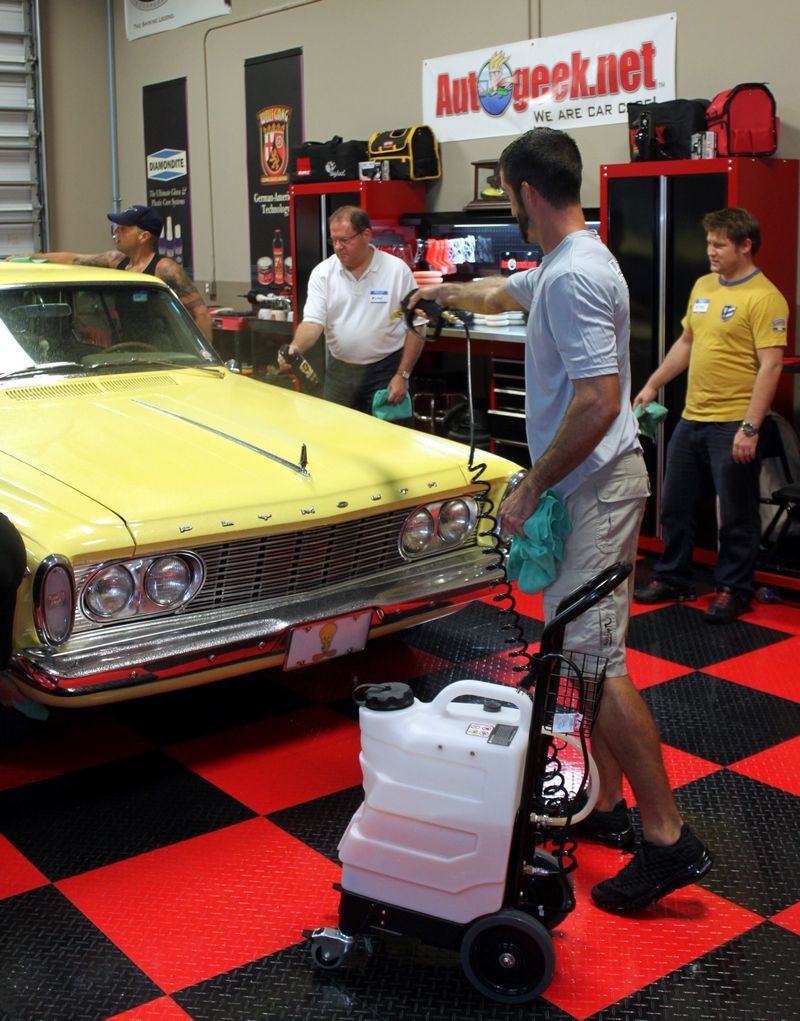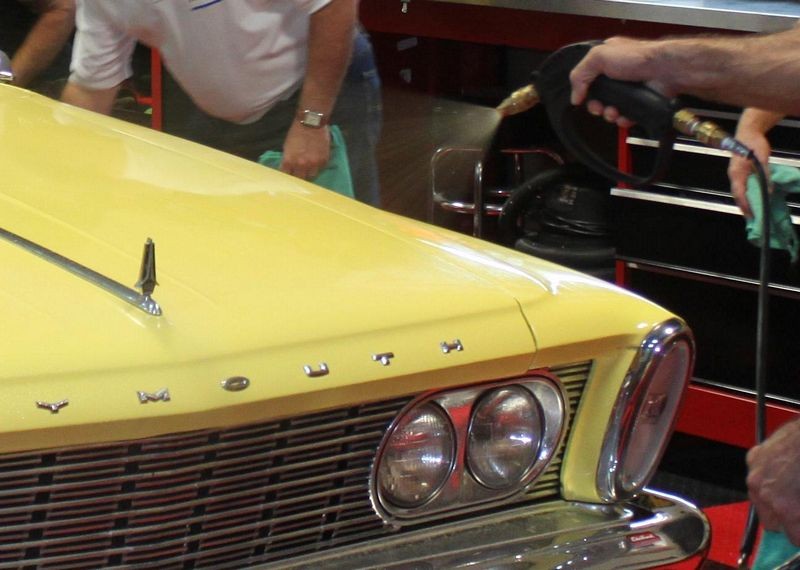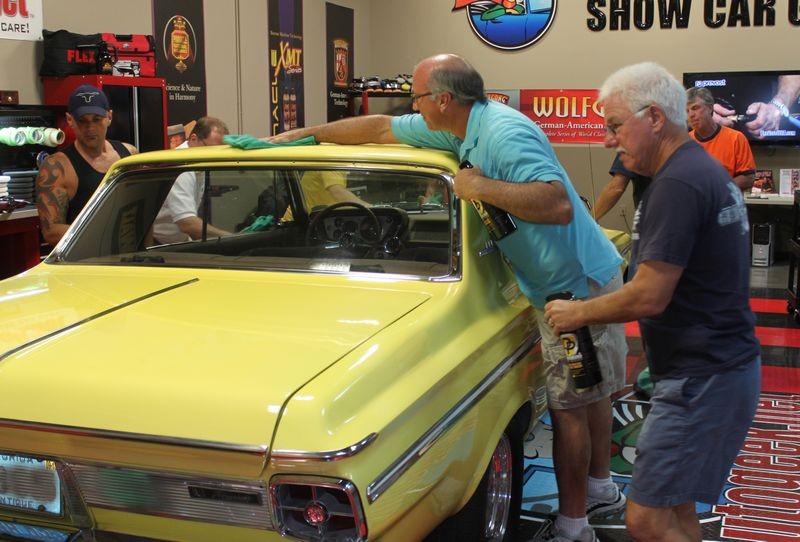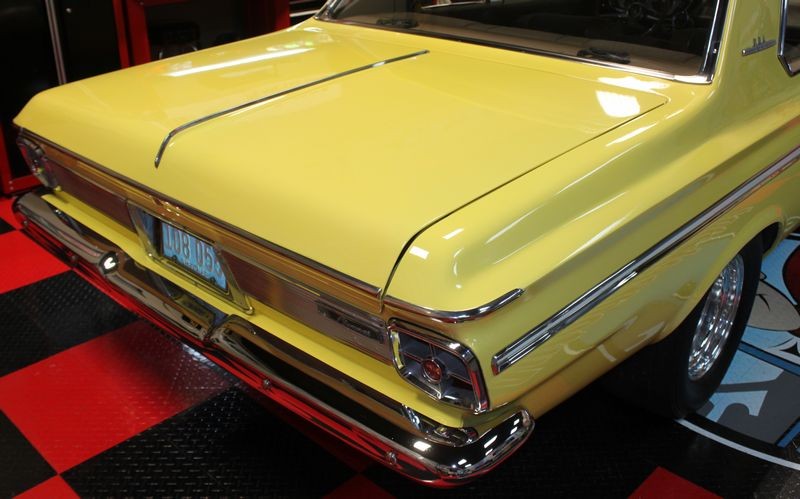Mike Phillips
Active member
- Dec 5, 2022
- 51,004
- 6
How To Wash a Classic Muscle Car
Here's a tip for anyone that owns a classic muscle car for how to get your car clean without having to use a traditional car wash using a hose and bucket and that's by using a waterless wash.
Here's why...
Washing a classic muscle car, or any classic or antique car using a hose and bucket flushes the car with a lot of water. Here's the problem... the water gets everywhere and by this I mean into places you cannot reach to dry and this creates a potential rust issue.
As a professional courtesy and as a professional "Best Practice" I don't wash classic, antique or muscle cars and I don't even use rinseless washes on them, I use waterless washes.
Example: 1963 Plymouth Fury
Last night we had a classic muscle car that has been recently painted. The car has overspray paint all over the paint, glass, trim, bumpers and pretty much everything on the exterior. Before we clayed the car and used the Nanoskin Autoscrub pads to remove the overspray the first thing we did was use a waterless wash to remove all the loose surface dirt and we did this two ways.
The first way we used the waterless was was using the Mytee Big Boss Rechargeable Solution Sprayer. Now this isn't the type of tool the casual car owner buys to wash a couple of classic cars out in the garage. It is the type of tool a mobile detailer could use save their hands from getting carpel tunnel or repetitive motion injuries. It's a very cool tool that will lay down a waterless wash with the pull of a trigger.
Here's Andy using the Mytee Big Boss Rechargeable Solution Spray using Detailer's Waterless Auto Wash Concentrate mixed 1 to 3. The holding tank on the Big Boss holds 5 gallons so mixing this concentrate is a simple as adding one gallon of the concentrate to 3 gallons of water to create 4 gallons of ready to use waterless wash.

The Big Boss comes with both a short nozzle sprayer for wetting down car exteriors or a wand sprayer for extended reach. In this shot Andy is using the short nozzle sprayer.


After wetting the hood and front grill and bumper Andre moves in to spread the product around and wipe these areas clean.

Andy tackles the bumper and front grill...

Simple Method
The simple way to use a waterless wash is to simply use a spray bottle to wet the surface. Here's John using Detailer's Waterless Auto Wash to wipe the roof clean...


Helpful tip...
When using a waterless wash, have plenty of clean, dry microfiber towels on hand and switch to a clean, dry towel often to prevent cross-contamination while wiping the exterior body panels clean.
The above is how to take a professional approach to cleaning a classic, antique or muscle car without introducing a lot of water posing a potential risk for rust in places you cannot see or reach to dry.
On Autogeek.net
Detailer's Waterless Auto Wash Concentrate
Detailer's Waterless Wash

Here's a tip for anyone that owns a classic muscle car for how to get your car clean without having to use a traditional car wash using a hose and bucket and that's by using a waterless wash.
Here's why...
Washing a classic muscle car, or any classic or antique car using a hose and bucket flushes the car with a lot of water. Here's the problem... the water gets everywhere and by this I mean into places you cannot reach to dry and this creates a potential rust issue.
As a professional courtesy and as a professional "Best Practice" I don't wash classic, antique or muscle cars and I don't even use rinseless washes on them, I use waterless washes.
Example: 1963 Plymouth Fury
Last night we had a classic muscle car that has been recently painted. The car has overspray paint all over the paint, glass, trim, bumpers and pretty much everything on the exterior. Before we clayed the car and used the Nanoskin Autoscrub pads to remove the overspray the first thing we did was use a waterless wash to remove all the loose surface dirt and we did this two ways.
The first way we used the waterless was was using the Mytee Big Boss Rechargeable Solution Sprayer. Now this isn't the type of tool the casual car owner buys to wash a couple of classic cars out in the garage. It is the type of tool a mobile detailer could use save their hands from getting carpel tunnel or repetitive motion injuries. It's a very cool tool that will lay down a waterless wash with the pull of a trigger.
Here's Andy using the Mytee Big Boss Rechargeable Solution Spray using Detailer's Waterless Auto Wash Concentrate mixed 1 to 3. The holding tank on the Big Boss holds 5 gallons so mixing this concentrate is a simple as adding one gallon of the concentrate to 3 gallons of water to create 4 gallons of ready to use waterless wash.

The Big Boss comes with both a short nozzle sprayer for wetting down car exteriors or a wand sprayer for extended reach. In this shot Andy is using the short nozzle sprayer.


After wetting the hood and front grill and bumper Andre moves in to spread the product around and wipe these areas clean.

Andy tackles the bumper and front grill...

Simple Method
The simple way to use a waterless wash is to simply use a spray bottle to wet the surface. Here's John using Detailer's Waterless Auto Wash to wipe the roof clean...


Helpful tip...
When using a waterless wash, have plenty of clean, dry microfiber towels on hand and switch to a clean, dry towel often to prevent cross-contamination while wiping the exterior body panels clean.
The above is how to take a professional approach to cleaning a classic, antique or muscle car without introducing a lot of water posing a potential risk for rust in places you cannot see or reach to dry.
On Autogeek.net
Detailer's Waterless Auto Wash Concentrate
Detailer's Waterless Wash



